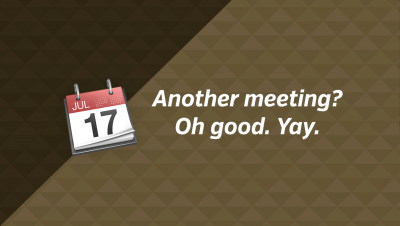Chaos is the natural state for a creative business. Whether you work solo from home or play a part in the great beehive of a global agency, disorder and clutter will take over your life, if you let them. We all seek to be more organised, but many creative professionals make mistakes in their noble efforts toward order.
Not having systems in place
As readers and listeners will know, I’m a huge fan of systems, but not everyone shares this affection. It would shock and disgust you to see how many agencies and in-house teams don’t have a unifying system in place. I’ve seen places where files are saved on individual employees’ computers and not backed up, and where previous projects were stashed on external hard drives, unlabeled and jumbled in a back closet. Yikes.
There is no universal system which works for every person and every business, but if your goal is to maintain order and organization, you should create something to govern how you operate. Rather than hard-and-fast rules, I like to create a few governing philosophies to serve as a reference. For example, assume that everyone is unable to remember anything older than 6 months? If that were actually to happen, you’d need to create a solid system for labeling files and documenting past events. Or imagine that you’d need to add a duplicate of a particular employee — how would you train this person on day one? The best systems ask the question “What if I vanished tomorrow?” Your systems should be robust enough where someone else could pick up where you left off; they’d know where to look for files, how to treat current projects, and how to review archived materials.
Not creating official guidelines
Too many creatives and teams don’t share the system they’ve created with fellow employees or with their outside partners. This could be everything from directions on how to name files, to intricate diagrams that illustrate the agency’s entire business model. It may seem like details that are fast-learned don’t need to be formally documented, but having them written down codifies the system and gets everyone on the same page (literally).
In addition to documentation as best practice, you should never assume that people will just follow by example. If you want phone numbers written with dots, e.g. 201.555.3213, then you have to let everyone know explicitly. Even if every phone number in every document is written as such, the next person who comes in will instinctively write (201) 555-3213 out of habit. (Same goes with spelling “organize” with Z, in the North American style.) Now imagine a scenario that extends beyond spelling and punctuation to client relations, writing proposals, or sending invoices. Want things done a certain way? Make it crystal clear.
Looking for software solutions without defining a problem
As a software nerd, I love testing out new productivity and project management tools. But too many creative pros will instinctively search for software to help them be more organized, without first asking themselves “why”. No tool can fix a problem that hasn’t been defined. Instead, you should describe how your team works — using words — and discuss the pain points in your project workflow. Examples could be “We spend too much time searching our inboxes for attachments” to which a possible solution could be a cloud storage tool like Dropbox. If you find that information gets lost when handing off between project manager and designer, or you lose track of hours expended on this “quick” project, you’ll come to realise that you should look for team chat and time-tracking functions, respectively.
Envision a software solution to your organizational problems before you go searching. You may not find the singular perfect tool — in fact, I’m certain you won’t — but you’ll be primed to think of workarounds and alternatives to suit your needs. This will also avoid the all-too-common mistake of choosing a powerful, cumbersome software tool that has nothing to do with your process and workflow, and instead slows you down and stresses you out.
What mistakes have you made in your efforts to be more organized? Share your stories in the comments. Don’t worry, we’re here to help.
Enjoyed this article?
More insight and resources delivered in our newsletter. Sign up below to receive site updates.













